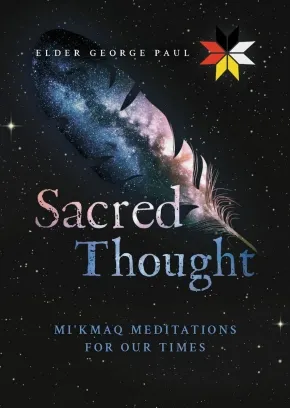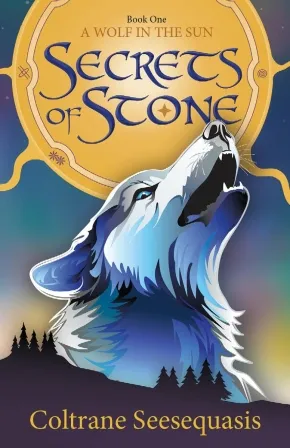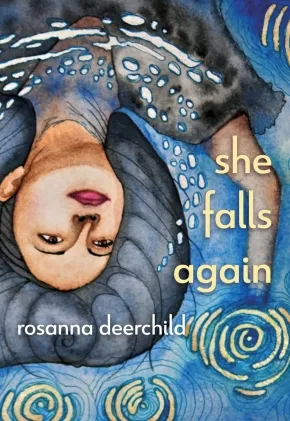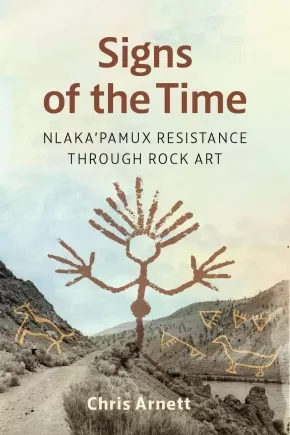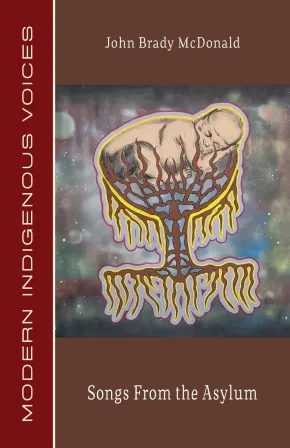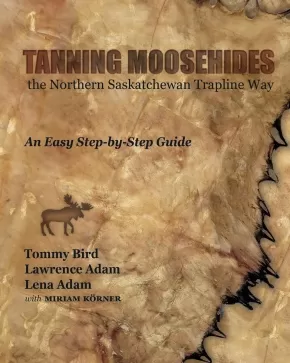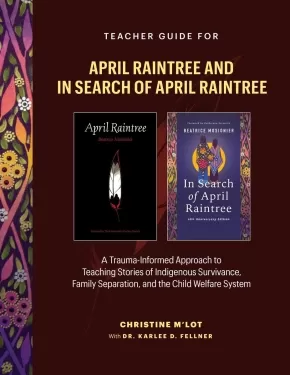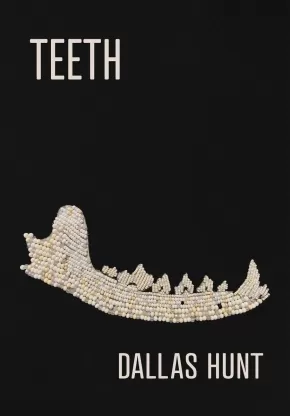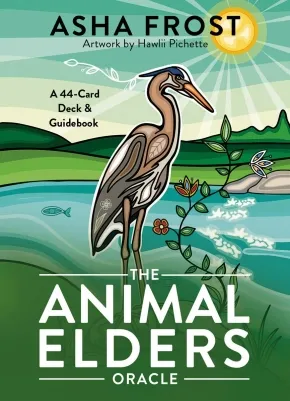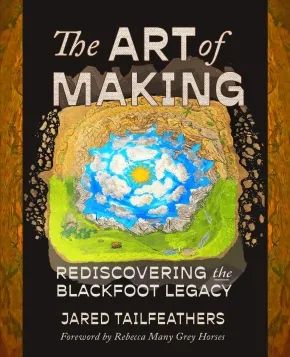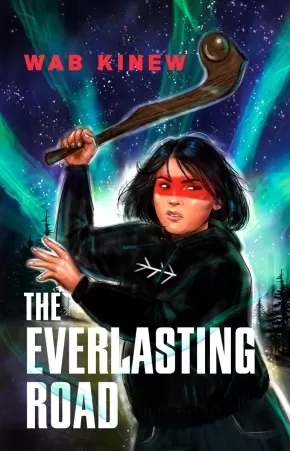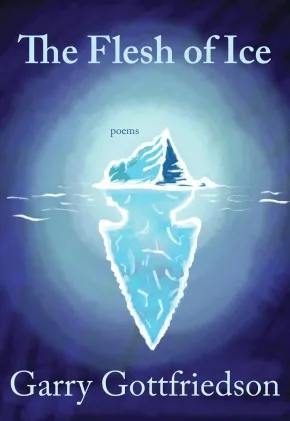
First Nations
121
-
135
of
666 Results;
Sort By
Go To
of 45
Righting Canada's Wrongs Indigenous Studies Resource Guide (6 in Stock)
$24.95
Format:
Paperback
Text Content Territories:
Indigenous Canadian; First Nations; Inuit; Métis;
ISBN / Barcode: 9781459419643
Synopsis:
Synopsis:
A resource guide for the Righting Canada’s Wrongs Indigenous Studies set that provides lessons in historical thinking.
The Righting Canada's Wrongs Indigenous Studies set series is devoted to the exploration of racist and discriminatory government policies and actions against Indigenous peoples through our history, the fight for acknowledgement and justice and the eventual apologies and restitution of subsequent governments. The books in this series make a valuable addition to any classroom or library looking for kid-friendly and appealing resources on Indigenous Studies and equal rights in Canada. The engaging and curriculum-based lessons in this Resource Guide will help students to further understand some of the important events in Canada's history that helped shape our current multicultural society. Educators will find support for teaching about Canada's past and ongoing treatment of Indigenous Peoples and how to approach the topic of, colonization, racism and discrimination. As well, students will learn about the important cultures and traditions that have continued in the face of colonization.
Educator Information
Recommended for use with ages 13+
This resource guide provides lessons in historical thinking for the Righting Canada’s Wrongs Indigenous Studies set:
- Righting Canada's Wrongs: Inuit Relocations: Colonial Policies and Practices, Inuit Resilience and Resistance
- Righting Canada's Wrongs: Residential Schools: The Devastating Impact on Canada's Indigenous Peoples and the Truth and Reconciliation Commission's Findings and Calls for Action (PB) - 2nd Edition
- Righting Canada's Wrongs: The Sixties Scoop and the Stolen Lives of Indigenous Children
Additional Information
120 Pages | 8.5" x 11" | Paperback
Roth
$29.99
Artists:
Format:
Paperback
Text Content Territories:
Indigenous Canadian; First Nations; Dene; Tlicho (Dogrib);
ISBN / Barcode: 9781989754221
Synopsis:
Synopsis:
Unless there is snow on the ground, never speak their name aloud.
The more they eat the hungrier they become, and they are starving.
They were meant to stay undisturbed, their dismembered limbs scattered, frozen under the permafrost, but as is always the way, the greed of industry has unburied them once more. Now, the most feared, the Wheetago, have returned, using their powers to call back the Na acho, cannibalistic giants once banished by Dene deities.
The revered hero known as the Child Finder who is fighting to cling to his humanity after a Wheetago attack, a mother and her young son, and a desperate band of convicts, form an uneasy alliance to survive the Wheetago horrors now awakened.
ROTH, from award-winning, bestselling Tlicho Dene author Richard Van Camp, and visionary illustrator Christopher Shy is the first graphic novel in the Wheetago War series.
Reviews
"A storyteller is what Richard Van Camp is—a storyteller par excellence. He tells us of family and traditions, of past and present spirits. Through Roth, he weaves his magic yet again, entwined with the richly atmospheric and terrestrial palette of Christopher Shy. With the Wheetago War series, kind-hearted and horrifically evil come together to hold you fully embraced, page after page."– Kent Williams artist & illustrator X-Men, Batman
"This spectacular, boundary-pushing book will change the way you look at graphic novels.Rooted in ancient and powerful narratives, this captivating saga will have you holding your breath until it releases you from its grip at the end, only to want more.”- Waubgeshig Rice, author Moon of the Turning Leaves
"In a post-apocalyptic future the Wheetago, supernatural beings with insatiable appetites buried long ago, have been awoken and are ravaging the world. Ross, a folk hero known as the Child Finder, struggles to hold on to his humanity after being bitten in a Wheetago attack. In order to recover his human form and find his family, Ross forms an alliance with a mother and son and a group of escaped convicts who vow to help him. These unlikely allies must overcome their suspicions of one another in order to fight the forces of ancient evil that threaten their survival and the survival of all humanity. Dark and evocative illustrations bring the epic battles to life and create an otherworldly atmosphere. The first in the Wheetago War series, this stunning graphic novel offers an introduction to Traditional Tlicho Dene Stories in an engaging format, while also exploring themes of trust, greed, mutual aid, and self-sacrifice." - Dionne L.-B., High School Librarian, Indigenous Books for Schools
Educator & Series Information
Recommended for ages 15+.
This book is the first book in the Wheetago War series.
This book is included in the Indigenous Books for Schools database from the Association of Book Publishers of BC. It is recommended for Grades 10 to 12 for Art, English Language Arts, and Social Studies.
Content Warning: Graphic violence and battles.
Additional Information
192 pages | 6.62" x 10.25" | Paperback
Sacred Thought: Mi'kmaq Meditations for our Times
$24.95
Format:
Paperback
Text Content Territories:
Indigenous Canadian; First Nations; Mi'kmaq (Mi'gmaq);
Reading Level: N/A
ISBN / Barcode: 9781998129256
Synopsis:
Synopsis:
In this philosophical exploration, Mi’kmaq Elder George Paul shares his traditional knowledge with those on a quest to better understand themselves and the world around them. Practiced and maintained by North American Indigenous tribes since time immemorial, this search for spirituality is informed by traditional knowledge, oral tradition and the use of symbols relating to our environment and to our universe. From the ceremonial to the sacred, George Paul meditates on the Indigenous legends, stories and designs of his ancient ancestors that offer new prospects to a modern population all across Turtle Island who are hungry to look inward.
With creation stories, buffalo sage and tapping into our spirit guides, Sacred Thought: Mi’kmaq Meditations for our Times is a book for those who are looking for balance and peace of mind in the chaos and confusion that govern the world today.
Reviews
“Elder George Paul, has dedicated more than four decades of his life to supporting the revitalization of our nation’s culture. In many ways, his tireless efforts have led a resurgence in our culture’s beautiful tapestry of language, spirit, and tradition — a colourful Mi'kmaw tapestry made all the more powerful when celebrated through the performance arts — and in particular, as we come together as a community to join in traditional song and dance.” - Julie Pellissier-Lush, Atlantic Books
"Elder George Paul has made significant contributions to safeguarding the cultural heritage of the Mi'kmaq. Through songs, stories and other artistic and intellectual expressions, he has worked tirelessly for decades to help our communities reclaim, revitalize and maintain traditional knowledge and practices passed down by our ancestors. This commitment shines in his latest book, Sacred Thought, which explores core aspects of our spirituality. The legacy of Elder Paul ensures that our distinct ways of knowing, being and doing will remain vibrant and relevant, and will continue to be deeply felt throughout Mi'kmaki and beyond." — The Honourable Brian Francis, Senator for Epekwitk (Prince Edward Island), Chair of the Standing Senate Committee on Indigenous Peoples and former Chief of Abegweit First Nation
"Elder George Paul, has dedicated more than four decades of his life to supporting the revitalization of our nation's culture. In many ways, his tireless efforts have led a resurgence in our culture's beautiful tapestry of language, spirit, and tradition - a colourful Mi'kmaw tapestry made all the more powerful when celebrated through the performance arts - and in particular, as we come together as a community to join in traditional song and dance." — Julie Pellissier-Lush, Atlantic Books
Additional Information
120 pages | 5.00" x 7.40" | Paperback
Secrets of Stone
$25.00
Format:
Paperback
Text Content Territories:
Indigenous;
ISBN / Barcode: 9781928120421
Synopsis:
Synopsis:
Centuries have passed since the forces of nature won the war against humanity. Sentient animals now rule a healing world, and as the stain of mankind continues to dwindle, a young wolf called Silversong is determined to rise in the hierarchy of his pack. Strong at manipulating wind and air, all he needs is a way to prove himself to his Chief.
Before he can get the respect he deserves, however, Silversong's aspirations are cut short by the Heretic and his outcast wolves. Against all odds, the Heretic and his band of exiles escape their imprisonment far to the west and wreak havoc on Silversong's pack. The exiles pose a threat unlike any other, and their enigmatic leader won't stop his brutal conquest until all wolfkind submits to him.
Silversong can't let a monstrous wolf like the Heretic roam free. With the wind at his back, he pursues the leader of the exiles into forests of shadow and into ancient places better left forgotten. But the further he strays from home, the more he comes to realize that maybe his enemies aren't so evil after all. Maybe there's a reason for the destruction they seek... and maybe there's a far greater danger lying in wait.
Educator & Series Information
Recommended for ages 13 to 17.
This is the first book in the Wolf in the Sun series.
Additional Information
243 pages | 5.50" x 8.50" | Paperback
She Falls Again
$23.95
Format:
Paperback
Text Content Territories:
Indigenous Canadian; First Nations; Cree (Nehiyawak);
Reading Level: N/A
ISBN / Barcode: 9781552454879
Synopsis:
Synopsis:
The Sky Woman has returned to bring down the patriarchy!
This book is about a poet who may or may not be going crazy, who is just trying to survive in Winnipeg, where Indigenous people, especially women, are being disappeared. She is talking to a crow who may or may not be a trickster, and who brings a very important message: Sky Woman has returned, and she is ready to take down the patriarchy.
This is poetry, prose and dialogue about the rise and return of the matriarch. It’s a call to resistance, a manifesto to the female self.
Cree poet and broadcaster Rosanna Deerchild is an important voice for our time. Her poems – angry, funny, sad – demand a new world for Indigenous women.
Awards
- 2025 Indigenous Voices Awards - Poetry in English Award
Additional Information
96 pages | 5.00" x 8.00" | Paperback
Signs of the Time: Nlaka'pamux Resistance through Rock Art
$39.95
Format:
Paperback
Text Content Territories:
Indigenous Canadian; First Nations; Salish; Interior Salish; Nlaka'pamux (Thompson);
Reading Level: N/A
ISBN / Barcode: 9780774867962
Synopsis:
Synopsis:
Rock art – etched in blood-red lines into granite cliffs, boulders, and caves – appears as beguiling, graffiti-like abstraction. What are these signs? The petroglyphs and red-ochre pictographs found across Nlaka’pamux territory in present-day British Columbia and Washington State are far more than a collection of ancient motifs.
Signs of the Time explores the historical and cultural reasons for making rock art. Chris Arnett draws on extensive archival research and decades of work with Elders and other Nlaka’pamux community members, their oral histories and oral tradition, to document the variability and similarity of practices. Rock art was and is a form of communication between the spirit and physical worlds, a way to pass information to later generations, and a powerful protection against challenges to a people, land, and culture.
Nlaka’pamux have used such culturally prescribed means to forestall external threats to their lifeways from as early as the sixteenth century – when they were aware of incipient European encroachment – until well into the twentieth. As this important work attests, rock art remains a signature of resilience and resistance to colonization among Nlaka’pamux today.
As well as providing essential reading for scholars and students of archaeology, cultural and applied anthropology, Indigenous studies, and art history, Signs of the Time will also fascinate rock art specialists and amateur enthusiasts.
Reviews
"Signs of the Time is innovative and provocative, adding dramatically to the discussion of how Western science interacts with and accommodates Indigenous knowledge, concerns, and heritage." — David S. Whitley, author of Cave Paintings and the Human Spirit: The Origin of Creativity and Belief
"Signs of the Time is informative and accessible, giving equal voice to Indigenous knowledge keepers and academics in presenting the ideas in petroglyphs and pictographs. It is an excellent example of how Eurowestern academics can work alongside Indigenous knowledge experts to understand the Indigenous world. I highly recommend it." — Lorna Wanosts’a7 Williams EdD; OC; OBC; Lil’watul; professor emerita, University of Victoria
Additional Information
256 pages | 6.00" x 9.00" | 40 b&w photos
Songs From the Asylum
$19.95
Format:
Paperback
Text Content Territories:
Indigenous Canadian; Métis; First Nations; Cree (Nehiyawak); Plains Cree; Muskeg Lake Cree Nation;
Reading Level: N/A
ISBN / Barcode: 9781772312379
Synopsis:
Synopsis:
For over twenty years, Nehiyawak-Metis artist and author John Brady McDonald’s day job has been working with youth. Over half of that time was spent as a Frontline Youth Outreach Worker on the streets of Prince Albert, Saskatchewan. During that time, John would write down his thoughts and feelings on scraps of paper and in little black hardcover notebooks, chronicling the struggles and traumas of the youth he worked with and which he himself had also experienced. Never being quite the right fit for his other poetry books, John took these poems and hid them away for years, until now. Recently rediscovered in his archives, John has compiled them, using a 54-year-old typewriter, into a work which gives voice to the experiences and resilience of those youth, along with his own experiences, thoughts and recollections of a poet in the midst of a turbulent moment in time amongst the concrete and asphalt of the city.
Educator & Series Information
This book is part of the Modern Indigenous Voices series.
Additional Information
88 pages | 5.50" x 8.50" | Paperback
Tanning Moosehides: The Northern Saskatchewan Trapline Way
$49.95
Format:
Coil Bound
Text Content Territories:
Indigenous Canadian; First Nations; Dene; Denesuline (Chipewyan); Fond du Lac Denes??iné First Nation; Cree (Nehiyawak); Woodland Cree; Rocky Cree; Peter Ballantyne Cree Nation;
ISBN / Barcode: 97817786903
Synopsis:
Synopsis:
Denesųłiné Elders Lawrence and Lena Adam have been tanning hides and sharing their knowledge with others for more than four decades. Woodland Cree knowledge carrier Tommy Bird helped his family tan hides on the trapline as a young boy. Together they share their lifetime of experience to guide a new generation of hide tanners to keep the tradition alive. The trouble-shooting tips and hands-on advice in this book will help you to make your own bone tools and turn raw moosehides into smoke-tanned hides soft enough to sew into mitts or moccasins. Combining traditional knowledge with easy-to-follow instructions and detailed colour photos, Tanning Moosehides the Northern Saskatchewan Trapline Way is a practical guide you will refer to again and again.
Educator Information
The publisher recommends this resource for ages 10+
Recommended in the Indigenous Books for Schools catalogue as a valuable resource for Art, Science, and Social Studies in grades 5 to 12.
Themes: Animals, Arts and Culture, Cultural Teachings, Fashion, Traditional Knowledge.
Additional Information
64 pages | 8.50" x 11.00" | Spiral Bound
Teacher Guide for In Search of April Raintree and April Raintree: A Trauma-Informed Approach to Teaching Stories of Indigenous Survivance, Family Separation, and the Child Welfare System
$25.95
Format:
Coil Bound
Text Content Territories:
Indigenous Canadian; Métis;
ISBN / Barcode: 9781774920947
Synopsis:
Synopsis:
First published in 1983, In Search of April Raintree is a Canadian classic that presents a heart-rending and powerful account of the harsh realities that Indigenous and Métis peoples face.
Written by Anishinaabe educator Christine M’Lot with psychologist Dr. Karlee Fellner, the Teacher Guide for In Search of April Raintree and April Raintree helps teachers create dynamic learning experiences for their students in grades 11 and 12, while maintaining a respectful and dignified approach to Indigenous topics.
In this guide you will find:
- an inquiry based approach with resources for teaching from a trauma-informed stance
- easy-to-use lesson plans, reproducibles, and assessment opportunities
- a focus on wellness and supporting students while learning about difficult topics
- activities that encourage cross-curricular connections and collaboration
- free access to supplemental videos covering wellness topics
- a glossary of terms and suggested resources to extend learning
Educator Information
For use with students in grades 11 and 12.
This teacher guide can be used with either In Search of April Raintree or April Raintree, a version written specifically for teens in grades 9 to 12 that does not contain the graphic graphic scene in the original.
Additional Information
98 pages | 8.50" x 11.00" | Spiral Bound
Teeth: Poems
$19.95
Format:
Paperback
Text Content Territories:
Indigenous Canadian; First Nations; Cree (Nehiyawak); Woodland Cree; Woods Cree; Swan River First Nation;
Reading Level: N/A
ISBN / Barcode: 9780889714526
Synopsis:
Synopsis:
This is a book about grief, death and longing. It’s about the gristle that lodges itself deep into one’s gums, between incisors and canines.
Teeth details not only the symptoms of colonization, but also the foundational and constitutive asymmetries that allow for it to proliferate and reproduce itself. Dallas Hunt grapples with the material realities and imaginaries Indigenous communities face, as well as the pockets of livability that they inhabit just to survive. Still this collection seeks joy in the everyday, in the flourishing of Indigenous Peoples in the elsewhere, in worlds to come.
Nestling into the place between love and ruin, Teeth traces the collisions of love undone and being undone by love, where “the hope is to find an ocean nested in shoulders—to reside there when the tidal waves come. and then love names the ruin.”
Additional Information
112 pages | 5.50" x 8.00" | Paperback
The Animal Elders Oracle: A 44-Card Deck & Guidebook of Indigenous Wisdom & Healing Medicine
$25.99
Artists:
Text Content Territories:
Indigenous Canadian; First Nations; Anishinaabeg; Ojibway;
Reading Level: N/A
ISBN / Barcode: 9781401978181
Synopsis:
Synopsis:
Tap into guidance from the animal spirit realm and connect to ancestral wisdom with this transformative 44-card deck and guidebook from Indigenous Medicine Woman and author of You Are the Medicine and The Sacred Medicine Oracle, Asha Frost.
Everything is interconnected. All of creation carries a spirit. Indigenous people have always had a sacred relationship with animals and treated them as honored elders. Animal beings in the spirit realm are part of our spiritual support team as allies and medicine keepers, ready to help, waiting to remind you of your humanity and deep connection to the natural world.
With 44 Elder Animals depicted in a richly detailed traditional Ojibway art style, each card carries its own unique medicine. This deck offers meaningful insights and messages to guide you on your path both from the universe and in the voice of an animal spirit guide from the lands of the Ojibway people—from Elder Artic Hare to Elder Wolf. Whether you're seeking clarity, healing, or a deeper connection to your ancestral lineage, these cards provide a bridge to the spirit world.
Use this deck your rituals and ceremonies, do readings with it for your clients and friends, and share it with your communities. As the medicine ripples out, hold Indigenous people in your heart and honor how their history continues to impact your current reality.
Additional Information
128 pages | 3.50" x 5.00" | Card Deck & Guidebook
The Art of Making: Rediscovering the Blackfoot Legacy
$42.50
Format:
Paperback
Reading Level: N/A
ISBN / Barcode: 9781990735547
Synopsis:
Synopsis:
The Art of Making: Rediscovering the Blackfoot Legacy is a captivating entry into Jared Tailfeathers’ quest of cultural reclamation. Accompanied by his family and loyal dogs, Tailfeathers delves into his Indigenous heritage through hands-on, land-based exploration. The book traces the evolution of the Blackfoot Confederacy, examining its trade routes, resources, and interactions pre- and post-1800s. It provides intricate details of Blackfoot connections with nature, neighbouring First Nations Peoples, and their rich legacy in tool-making, spiritual knowledge seeking, and artistic expression. Tailfeathers’ research began in 2019, driven by a deep desire to reacquaint himself with his cultural and historical identity as a Blackfoot man navigating a post-colonial world. This book is a journey into the heart of Blackfoot culture, told by a man who walks the ancestral trails with his dogs.
Educator & Series Information
This book is part of the Indigenous Spirit of Nature series.
Additional Information
208 pages | 7.25" x 9.25" | Colour Illustrations | Paperback
The Dialogues: The Song of Francis Pegahmagabow
$22.00
Format:
Paperback
Text Content Territories:
Indigenous Canadian; First Nations; Anishinaabeg; Ojibway; Wasauksing First Nation;
Reading Level: N/A
ISBN / Barcode: 9781989496916
Synopsis:
Synopsis:
In The Dialogues: The Song of Francis Pegahmagabow, award-winning author Armand Garnet Ruffo brings to life not only the story of the famed WWI Indigenous sniper, but also the complexities of telling Indigenous stories. From Manitoulin Island to the trenches of WWI to the stage, Ruffo moves seamlessly through time in these poems, taking the reader on a captivating journey through Pegahmagabow’s story and onto the creation of Sounding Thunder, the opera based on his life. Throughout, Ruffo uses the Ojibwe concept of two-eyed seeing, which combines the strengths of western and Indigenous ways of knowing, and invites the reader to do the same, particularly through the inclusion of the Anishinaabemowin language within the collection. These are poems that challenge western conventions of thinking, that celebrate hope and that show us a new way to see the world.
Additional Information
120 pages | 6.00" x 9.00" | Paperback
The Everlasting Road (PB)
$13.99
Format:
Paperback
Text Content Territories:
Indigenous Canadian; First Nations; Anishinaabeg;
ISBN / Barcode: 9780735269057
Synopsis:
Synopsis:
The boundaries between the virtual and the real world become dangerously blurred for a young Indigenous girl in the follow-up to the YA fantasy debut Walking in Two Worlds from bestselling Indigenous author Wab Kinew.
Devastated by the loss of her beloved older brother to cancer, Bugz returns to the place where she can always find solace and strength: the Floraverse. Over the past year, she has gained back all that she had lost in that virtual world, and while the remaining ClanLess members still plot against her, she is easily able to overcome their attacks. Even better, she's been secretly working on a bot that will be both an incredible weapon and a source of comfort: Waawaate.
With the Waawaate bot looking exactly like the brother she misses so much — even acting so much like him — Bugz feels ready to show him off to Feng, who has become a constant companion in the Verse, and she cannot wait to team up with both friend and bot to secure her dominance once and for all. But Feng has his own issues to deal with, especially when news that his parents are alive and want to contact him threatens to send his new life on the Rez into upheaval.
As they work through their complicated feelings of grief and loss, Feng and Bugz find themselves becoming ever closer. But disturbances in the Floraverse cannot be ignored, especially when Bugz realizes that her Waawaate bot is growing in powers beyond her control . . .
Educator & Series Information
Recommended for ages 12+.
This book is part of The Floraverse series.
This book is available in French: La Route sans fin
Additional Information
272 pages | 5.50" x 8.25" | Paperback
The Flesh of Ice
$20.00
Format:
Paperback
Text Content Territories:
Indigenous Canadian; First Nations; Salish; Interior Salish; Secwepemc (Shuswap);
Reading Level: N/A
ISBN / Barcode: 9781773861579
Synopsis:
Synopsis:
The Secwépemc term le estcwicwéy̓ (the missing) was given by Secwépemc elders who dedicated their knowledge and time to guide the community through the hell they were forced to endure in May 2021. Garry Gottfriedson’s The Flesh of Ice picks up the thread of his 2021 collection, Bent Back Tongue, describing the history and relationship of Indigenous people in Canada with the Canadian government and the Catholic church. Here is the story of those who survived Kamloops Indian Residential School (KIRS), and stories of descendants of KIRS who remembered "the missing” in the wake of the discovery of unmarked graves at the KIRS. Here, in hauntingly visceral poems, are the living conditions, policies and practices of the school itself, the stories of those who lived there, and the names of practitioners of the school, called out and cursed. Lastly, personal stories are given space to reclaim the narrative, taking readers on a journey of resilience, survival, pain and joy.
Reviews
"Drawing on the work of the late legal scholar Patricia Monture-Angus, I find fitting words for this book and for the former students of KIRS: first we were victims, then we were survivors and now we are warriors. Those warriors have now become teachers—teachers for those who learn to listen to the voices in this book."—from the prologue by Celia Haig-Brown
Additional Information
126 pages | 5.50" x 8.00" | Paperback
Sort By
Go To
of 45





